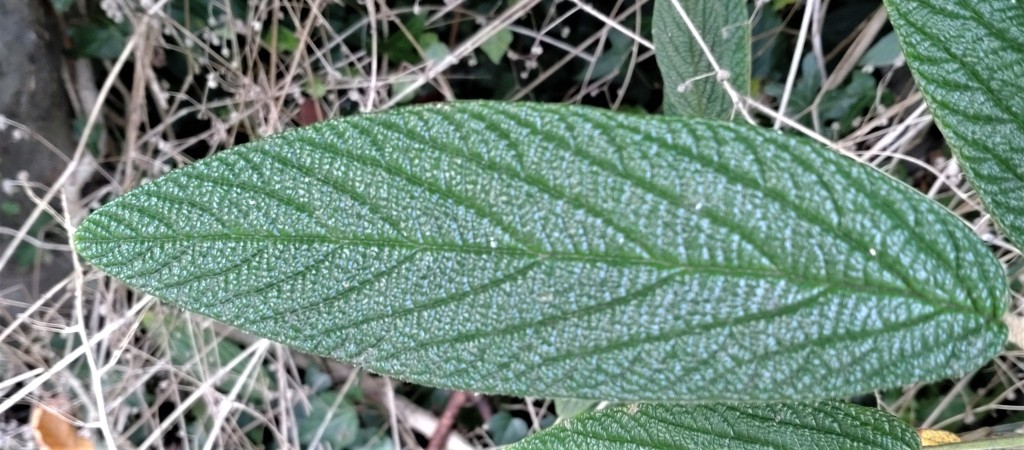
[358] Viburnum Species
Introduction
Viburnum is the scientific name for a genus with about 150 species, several of which are widely cultivated as garden plants, generally just known as Viburnum. They have attractive leaves and flowers and produce red, blue or black berries.
Some well-known species are as follows.
- Viburnum davidii, David Viburnum
- Viburnum lantana, The Wayfaring Tree or Wayfarer
- Viburnum opulus, the Guelder Rose or Guelder-rose
- Viburnum plicatum, Japanese Snowball.
- Viburnum rhytidophyllum, Leatherleaf Viburnum
- Viburnum sieboldii, Siebold’s Viburnum
- Viburnum tinus, Laurustinus or Laurustinus Viburnum
Many varieties and cultivars also come from well-established hybrids.
Taxonomy
Kingdom – Plants
Division – Vascular Plants
Class – Angiosperms (Flowering Plants)
Order – Dipsacales
Family – Adoxaceae
Genus – Viburnum
Scientific Names – See Text
There are many species, hybrids and cultivars of Viburnum. I have looked at varieties and cultivars in [305] Garden Roses, but here is a reminder. Horticultural plants have many varieties, generally defined as named Cultivars. Unlike the scientific part of a plant’s name, the Cultivar Name is not italicized; it does use capital letters; it’s always in quotation marks; and it’s English rather than Latin. It follows either a scientific genus and species epithet (when the species is known,) or a hybrid name (when it is a known hybrid,) or just the genus (when its origins are unknown or complex.) Some hybrids have their own names, often named from their inventors, short for the combination of both parent species.
Read on in the following text …
Name
Viburnum is the Classical Latin name for these shrubs, possibly from an Etruscan word. For individual species, hybrids and cultivars see text.
Species, Varieties and Cultivars
This is a classic example of a garden plant that is seen in so many forms that it can be difficult to identify precisely. It’s a problem that comes up often and we met it just two days ago with [356] Veronica/ Hebe. (The fact that these species keep Viburnum, Veronica and Hebe as common names is also typical of plants we only see in gardens.)
The species pf Viburnum are mostly dense bushy shrubs – with some growing to small trees. In general, cool temperate species are deciduous and most warm temperate species are evergreen. They have simple (not compound) leaves, generally plainly shaped. The flowers are small, growing in tightly bunched inflorescences, from white to light cream or pink. Fruits are small berries (technically drupes) and can be red, purple, blue or black.
I was going to give you the main species that I have seen but the situation is complex and there are many cultivated varieties of Viburnum. I looked recently at a catalogue from a nursery, where the varieties are carefully defined and here are some varieties and cultivars, with very brief notes, from this catalogue. There are probably many hundreds of approved and certified cultivars of Viburnum.
- Viburnum betulifolium. Not a well-known species. Betulifolium, of course, means with leaves shaped like [051] Birch.
- Viburnum x bodnatense ‘Charles Lamont’ (V. farreri x V. grandiflorum) The hybrid, first produced in 1935, is named from Bodnant Gardens in Wales and has many named cultivars.
- Viburnum x bodnatense ‘Dawn’
- Viburnum x burkwoodii, (V. carlesii x V. utile) This hybrid is named after Arthur and Albert Burkwood. It has many named cultivars.
- Viburnum x burkwoodii ‘Anne Russell’
- Viburnum x carlcephalum, Fragrant Snowball (V. carlesii x V. macrocephalum) Like V. plicatum below, the snowball sized ball of white flowers gives this hybrid its common name.
- Viburnum carlesii, Korean Spice Viburnum. Named after William Richard Carles (1848-1929) a British plant collector in Korea.
- Viburnum carlesii ‘Aurora’
- Viburnum cinamomifolium, Cinnamon-leaved Viburnum.
- Viburnum davidii, David Viburnum. Armand David (1826-1900) was a French missionary, zoologist and botanist. This species has distinctive dark green leaves, small cluster of flowers and blue fruits.

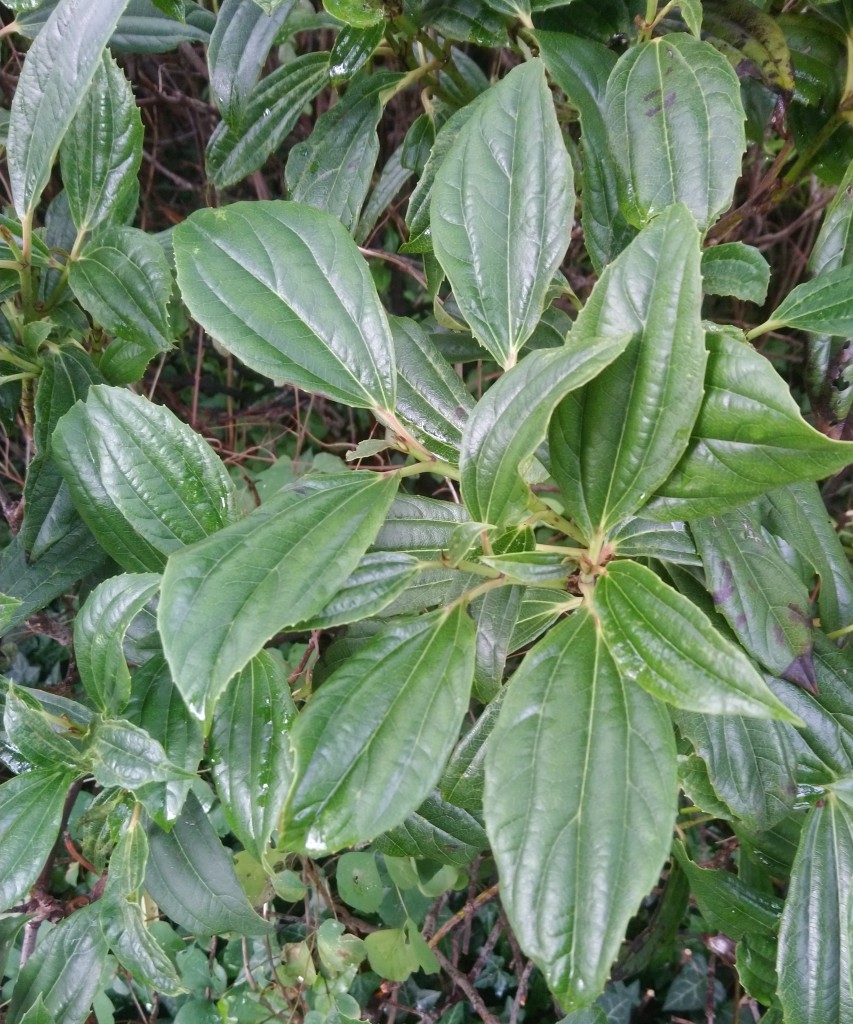

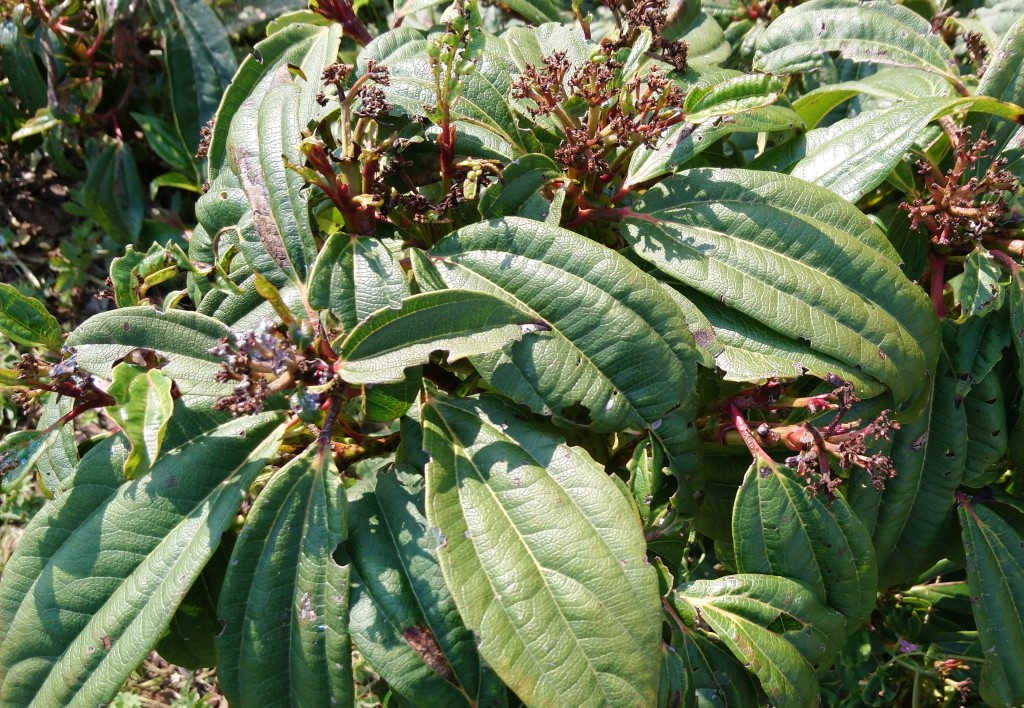
- Viburnum dentatum, Arrowwood Viburnum ‘Blue Muffin.’ This is an American species and its wood was used by Native Americans to make arrows.
- Viburnum ‘Eskimo’ of mixed or uncertain parentage
- Viburnum fragrans
- Viburnum x hilleri ‘Winton’
- Viburnum hoaglienense
- Viburnum x juddii (V. bitchiuense × V. carlesii)
- Viburnum lantana, The Wayfaring Tree. Lantana seems to be a Late Latin name for this tree, used in apposition. It is native to much of Europe including England as far North as Yorkshire. It has full stature as a tree and was common as a wayside tree. Its fruits start red and turn to black as they ripen.

- Viburnum odoratissumum, Sweet Viburnum.
- Viburnum opulus, Guelder Rose (or Guelder-rose) – several named varieties. Guelder Rose comes from the Dutch province of Gelderland, where a popular variety originated. It is native to Europe (including the UK) and adjacent parts of Africa and Asia. Opulus was the Classical Latin name for a type of Maple tree (and the leaves of this species look like those of Maples.) This species is grown for its vivid red berries as well as for the flowers. Its leaves are not like most other species of Viburnum.

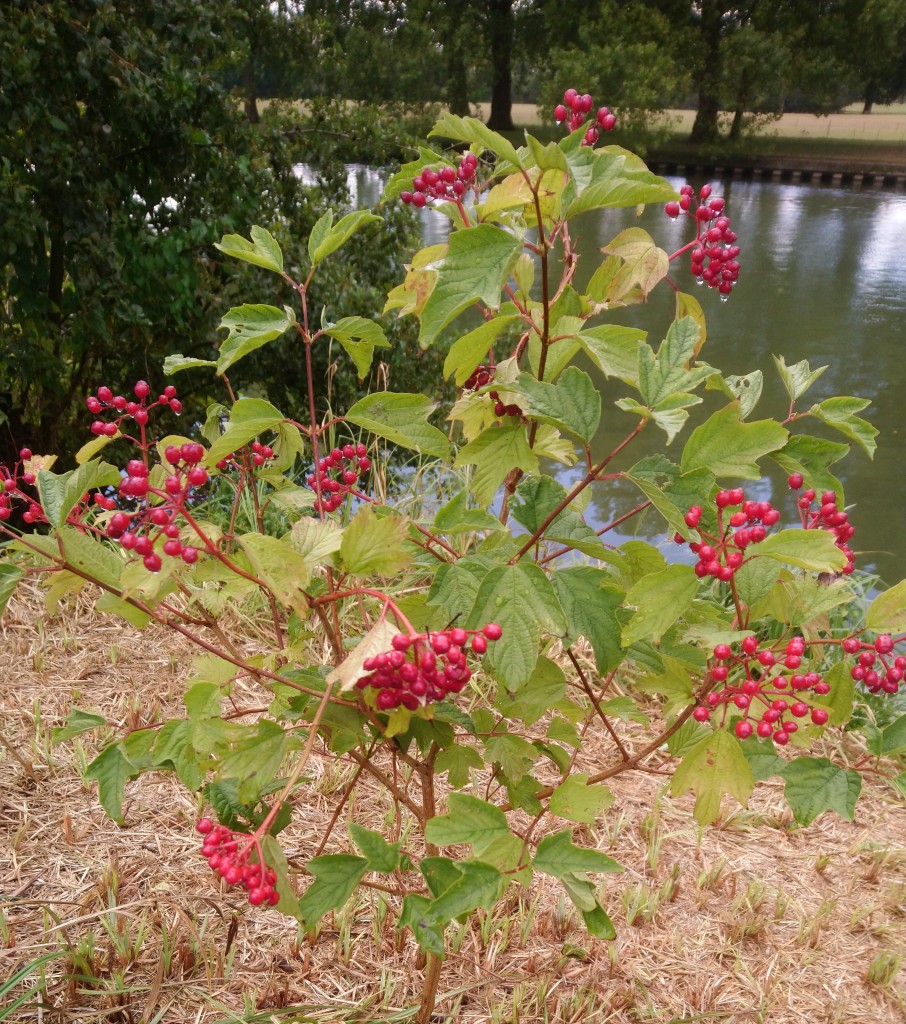




- Viburnum plicatum, Japanese Snowball – several separate named varieties. This species comes from China, Korea and Japan. Plicatum refers to the pleated nature of the leaves. It can grow to tree size.
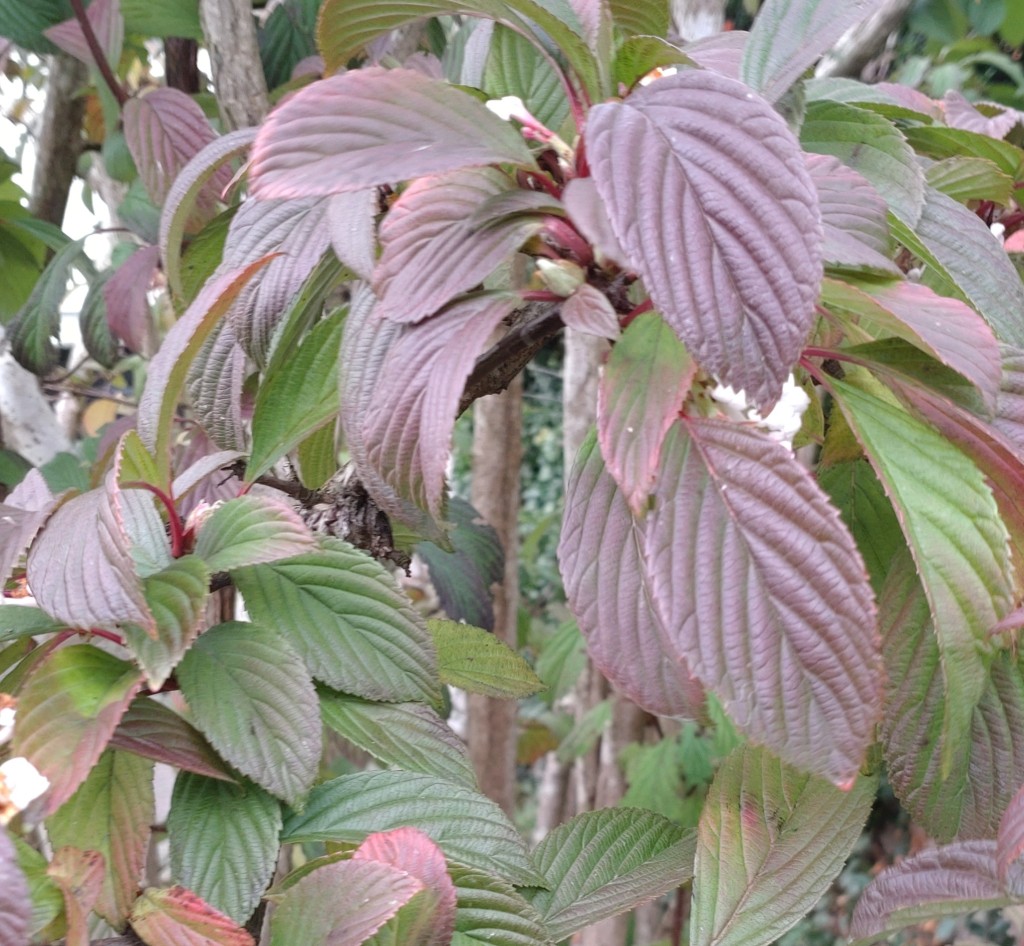

- Viburnum ‘Pragense.’ of mixed or uncertain parentage. Not the same as Viburnum x pragense (V. rhytidophyllum × V. utile)
- Viburnum rhytidiphyllum, Leatherleaf Viburnum. Rhytidi-folium means wrinkled leaves. This species comes from Asia. Named for its attractive deeply veined dark blue-green leaves. A parent species of other popular varieties.
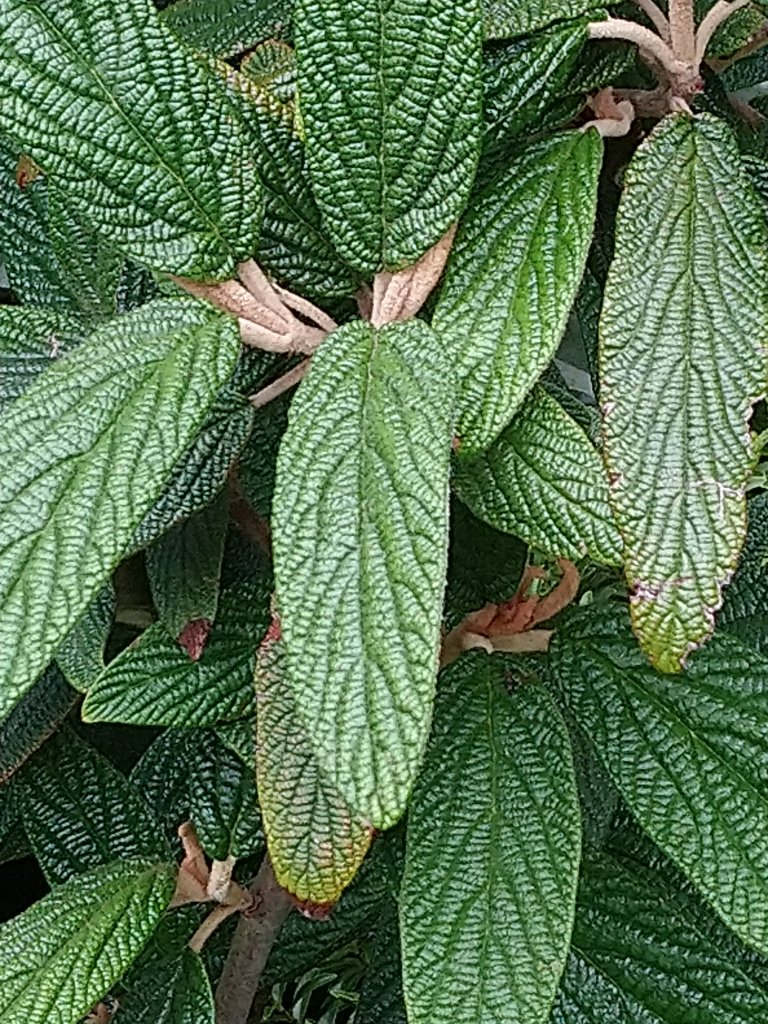
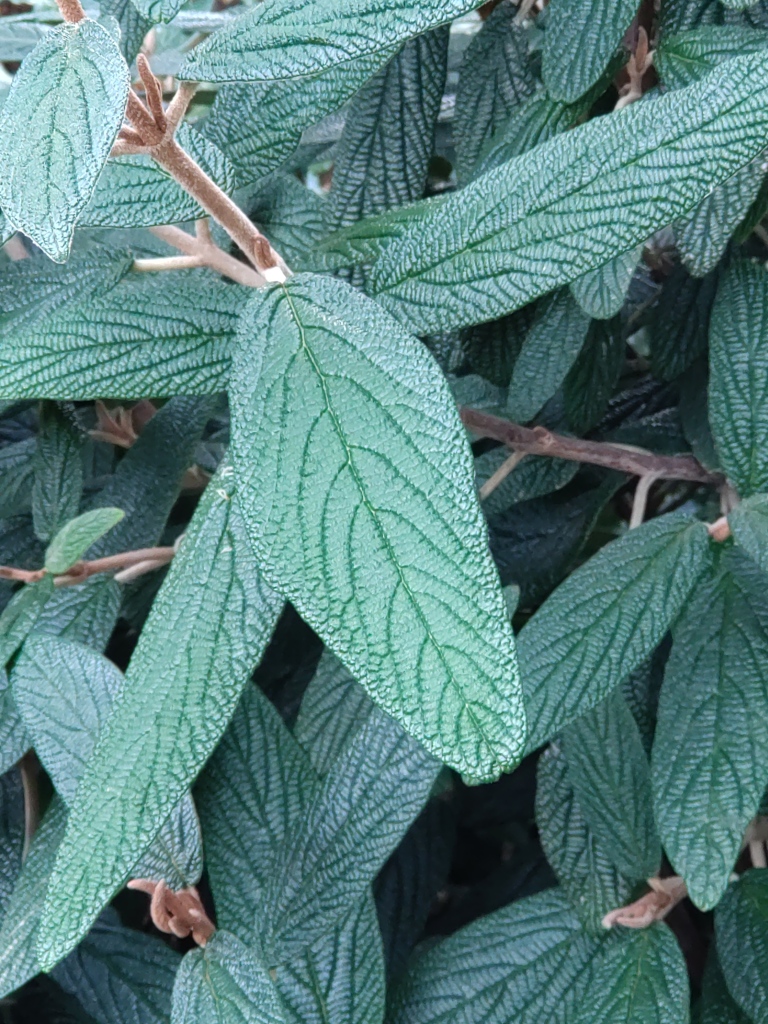
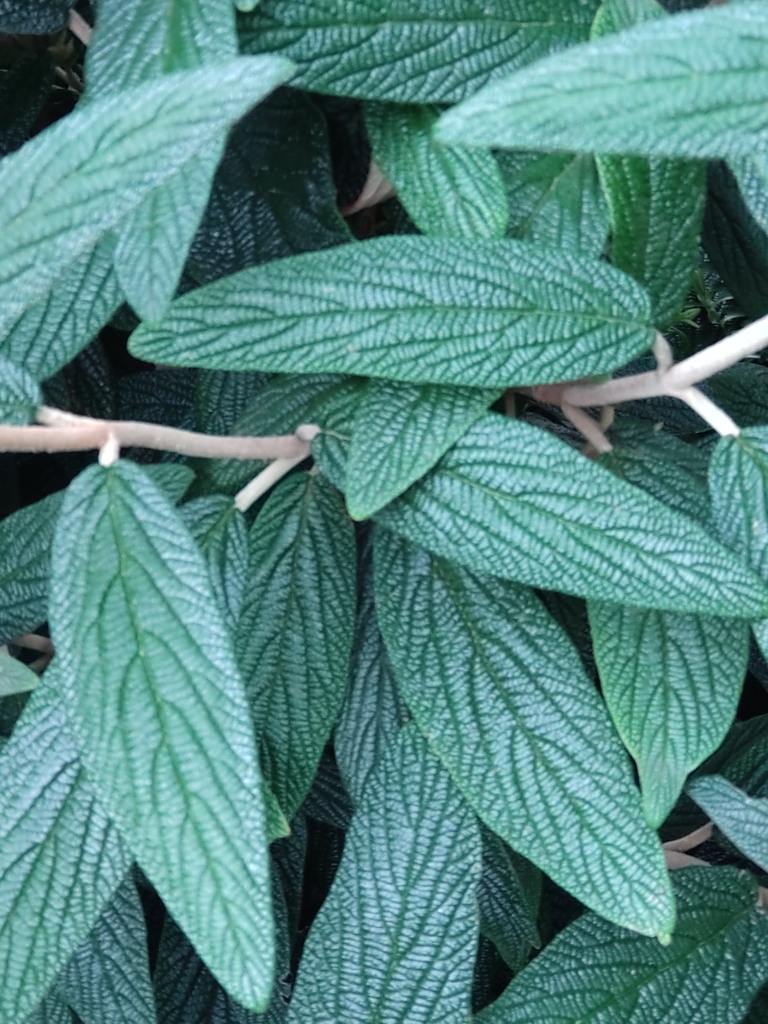
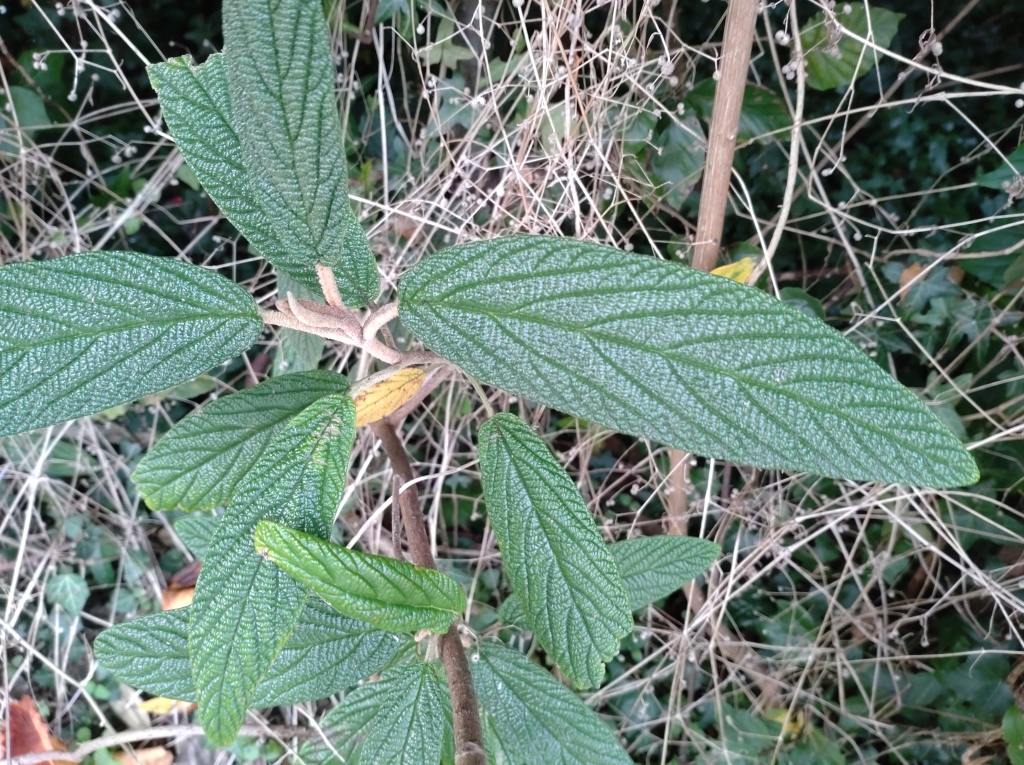

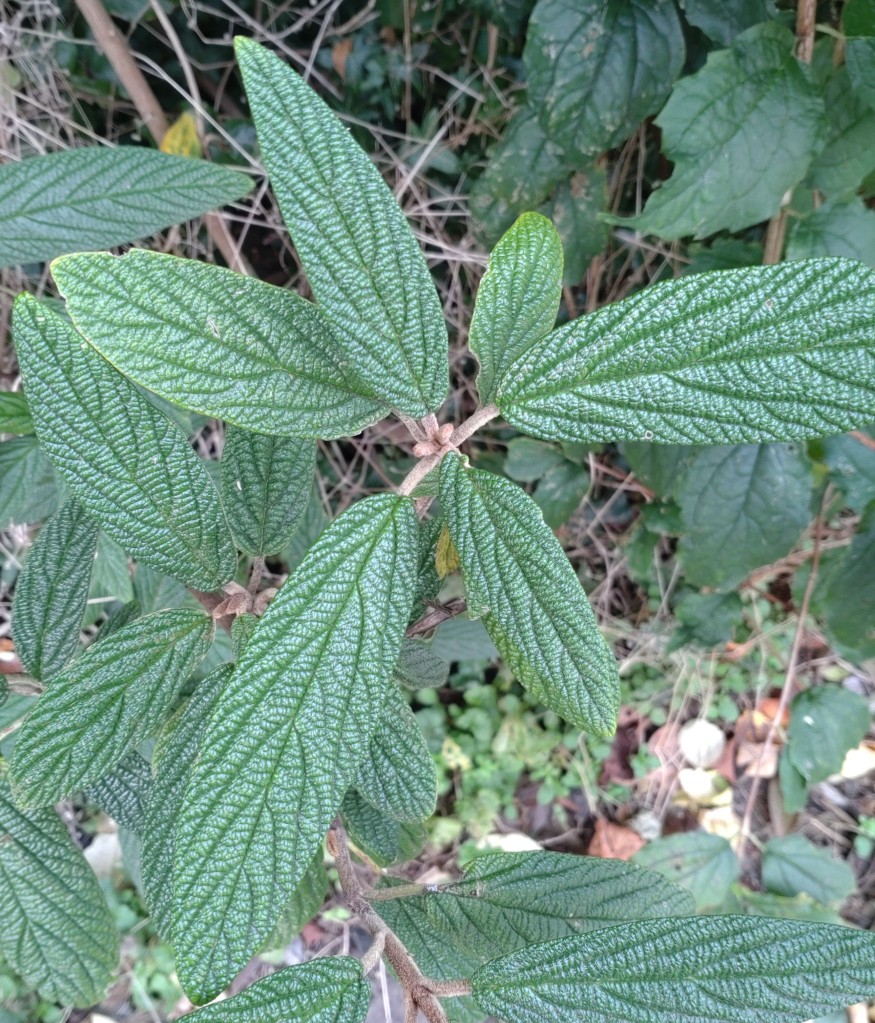
- Viburnum sargentii ‘Onondaga.’ Named after the American botanist Charles Sprague Sargent (1841-1927)
- Viburnum sieboldii, Siebold’s Viburnum. Philipp Franz von Siebold (1796-1866) was a German physician, botanist and traveller who studied Japanese flora and fauna and brought Western Medicine to Japan.



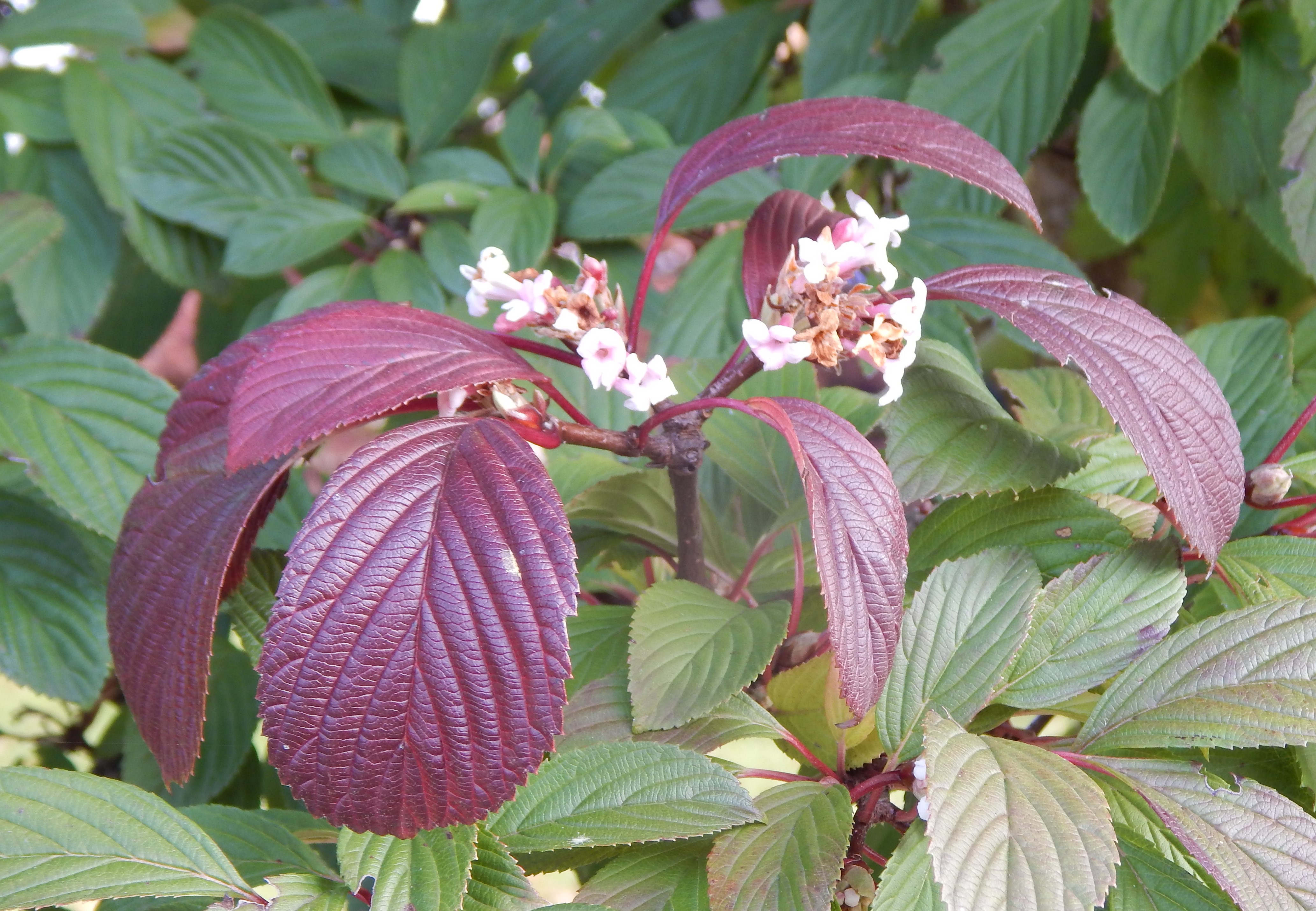



- Viburnum tinus, Laurustinus, Lauristine, Laurestine or Laurustinus Viburnum – many named varieties. Tinus was the Latin name for this species and laurustinus adds the Latin laurus for laurel, as the leaves are similar. This species originates from the Mediterranean area. The leaves are unexciting but the flowers are attractive and the fruits are blue-black.
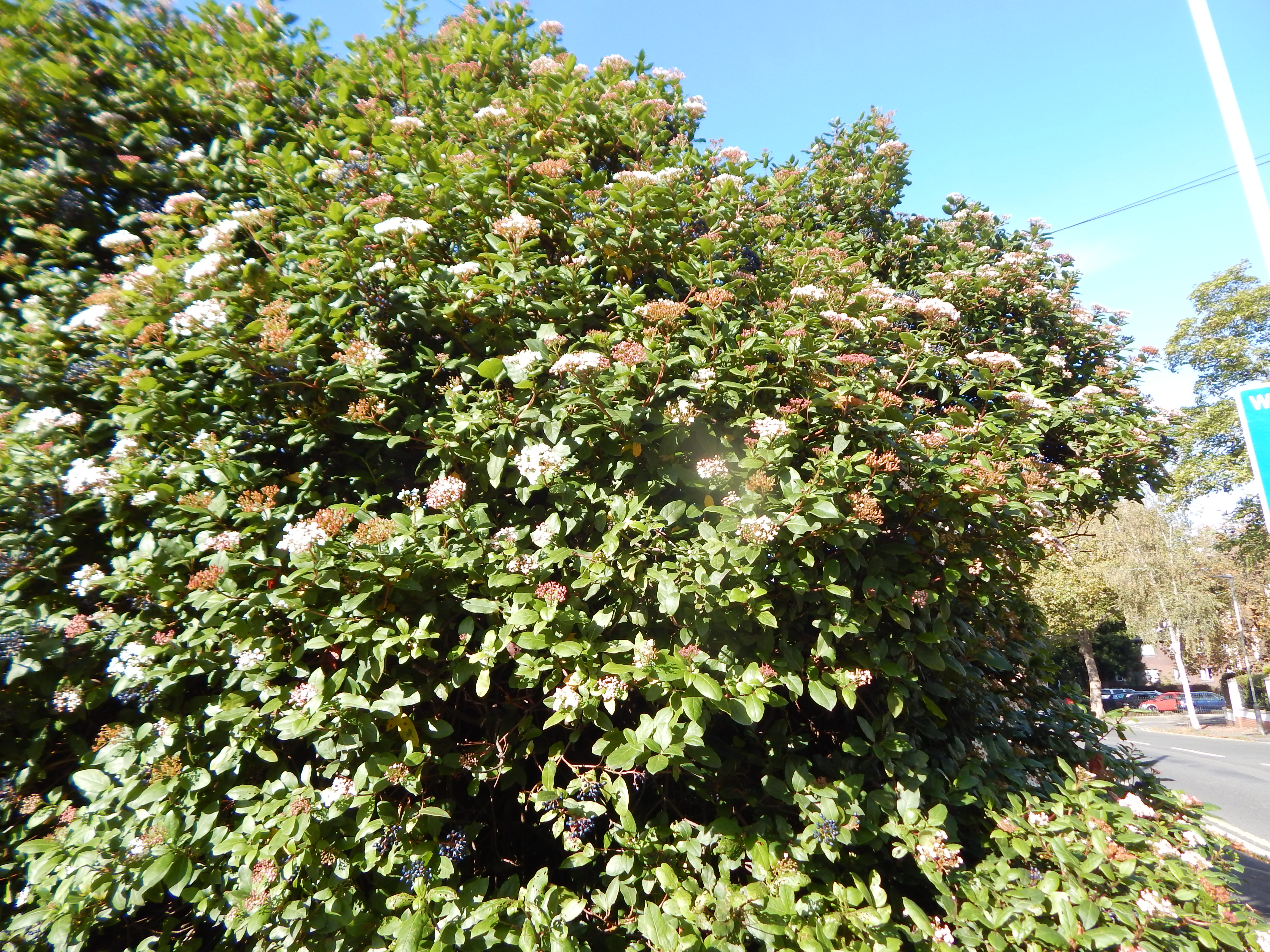
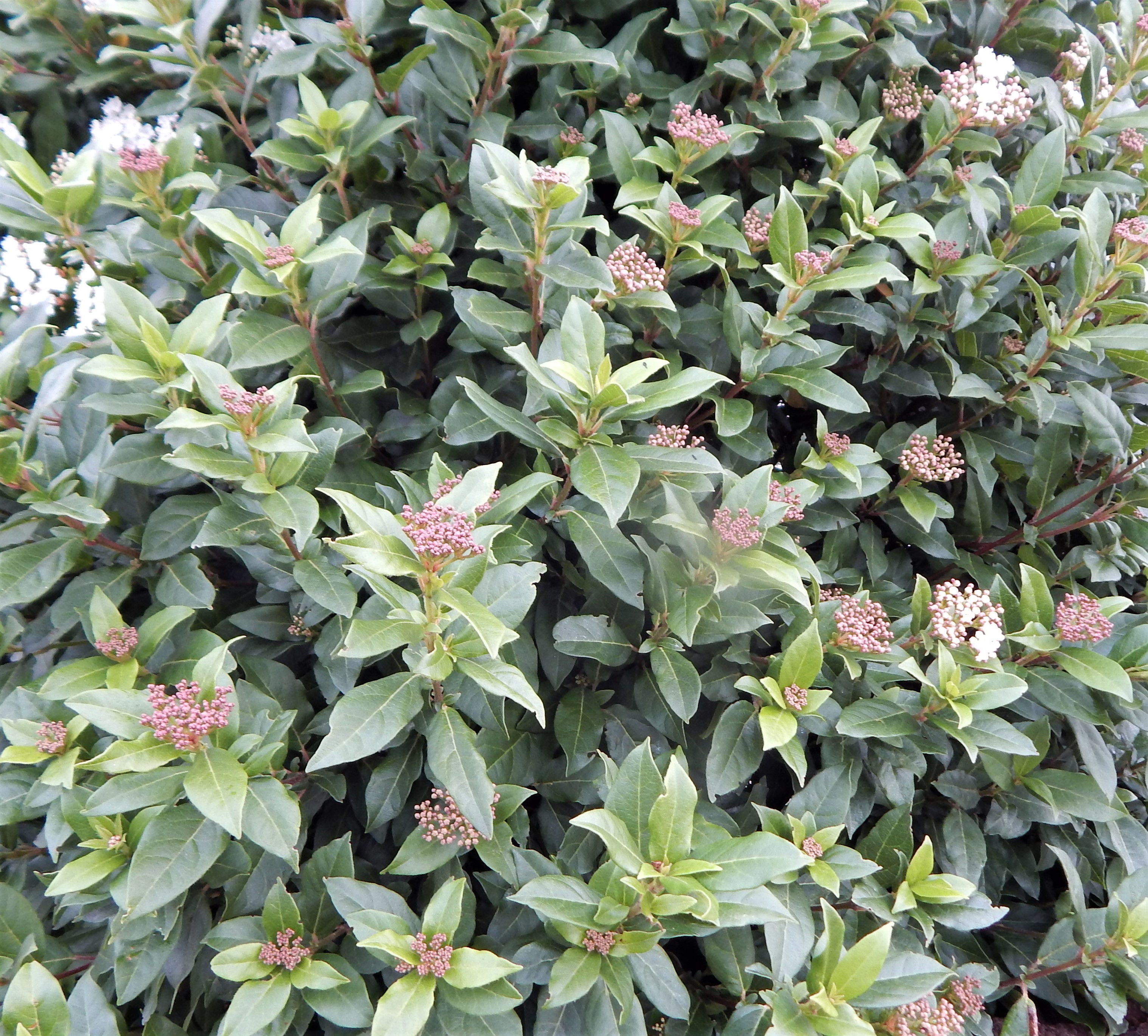
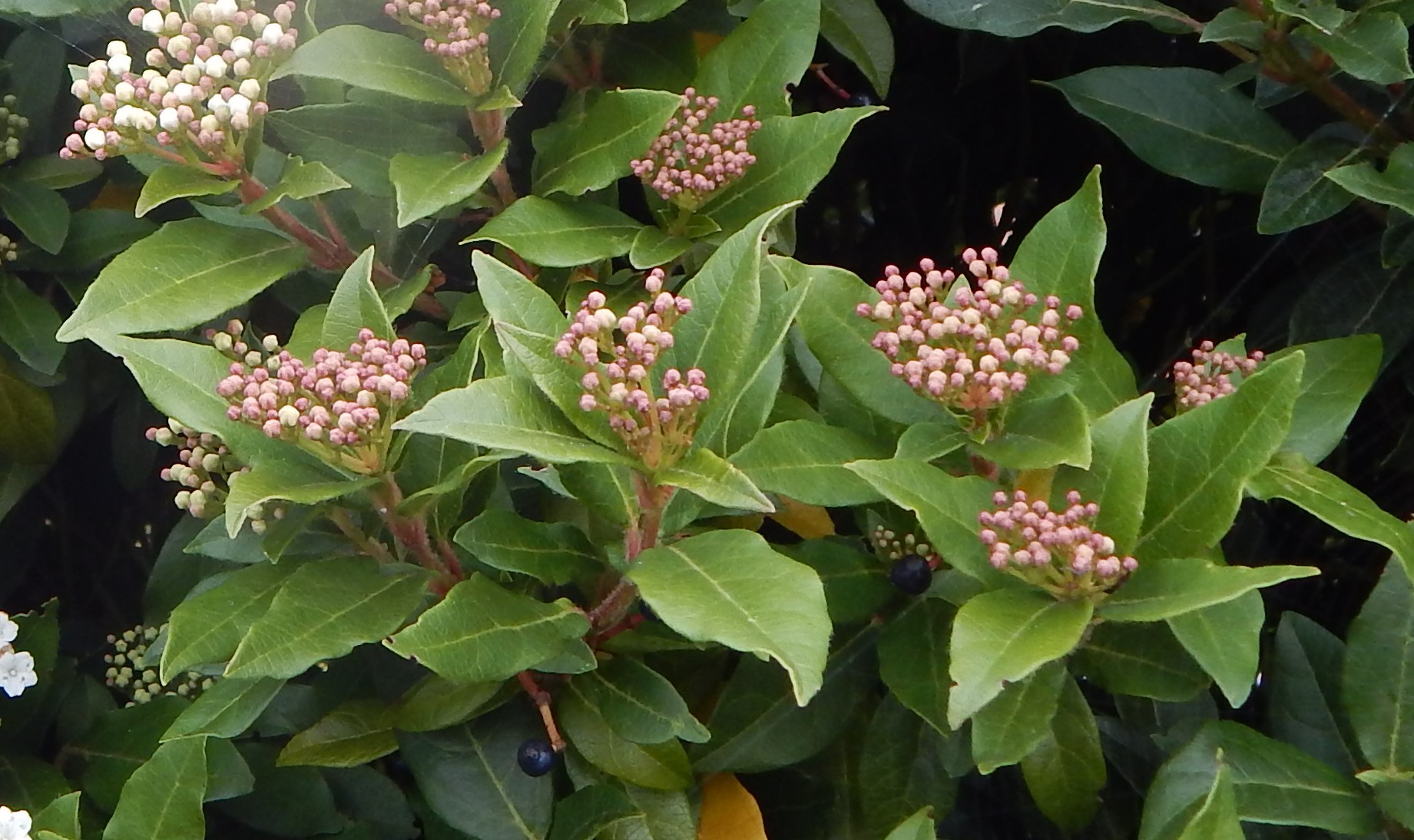
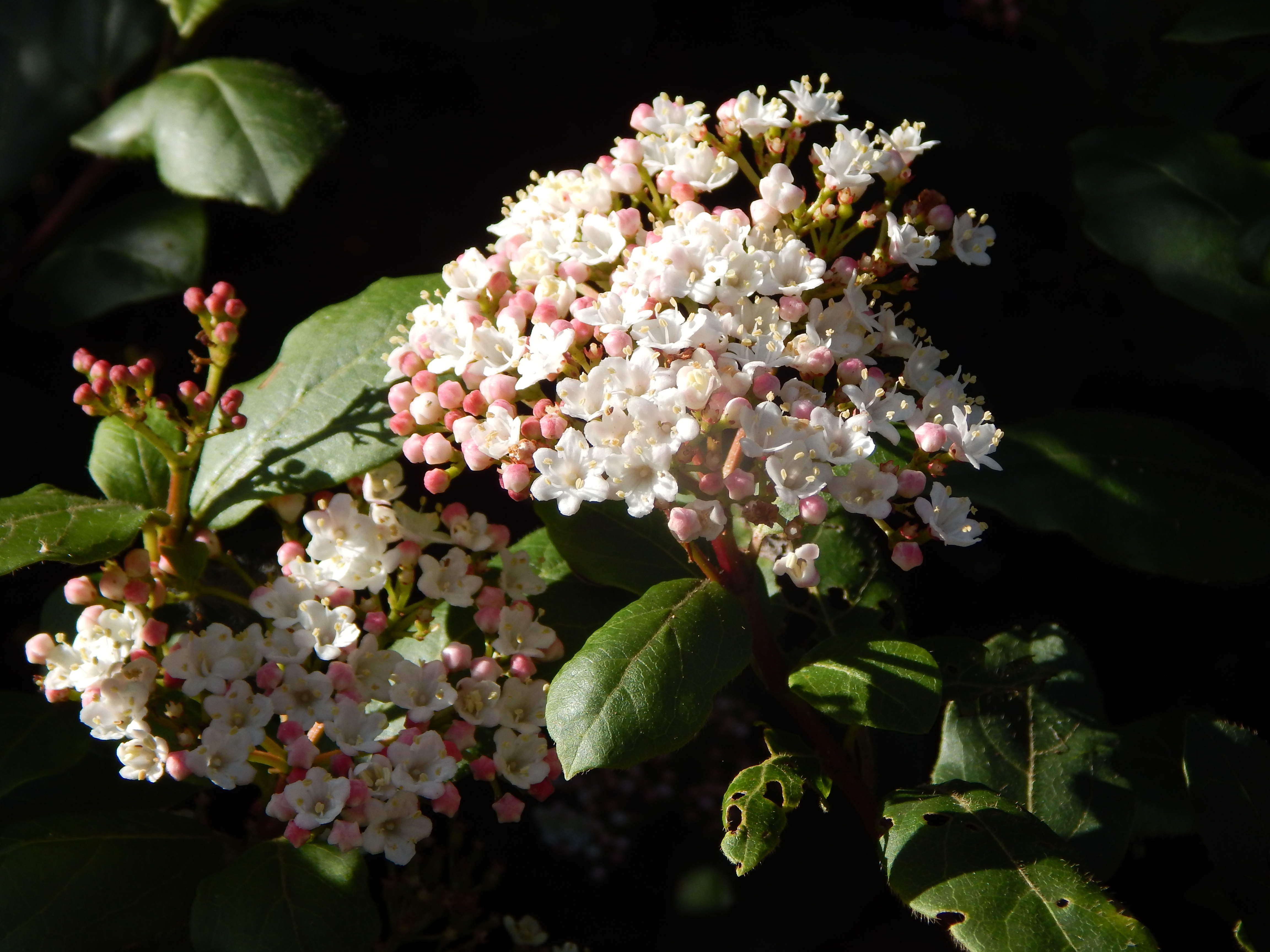

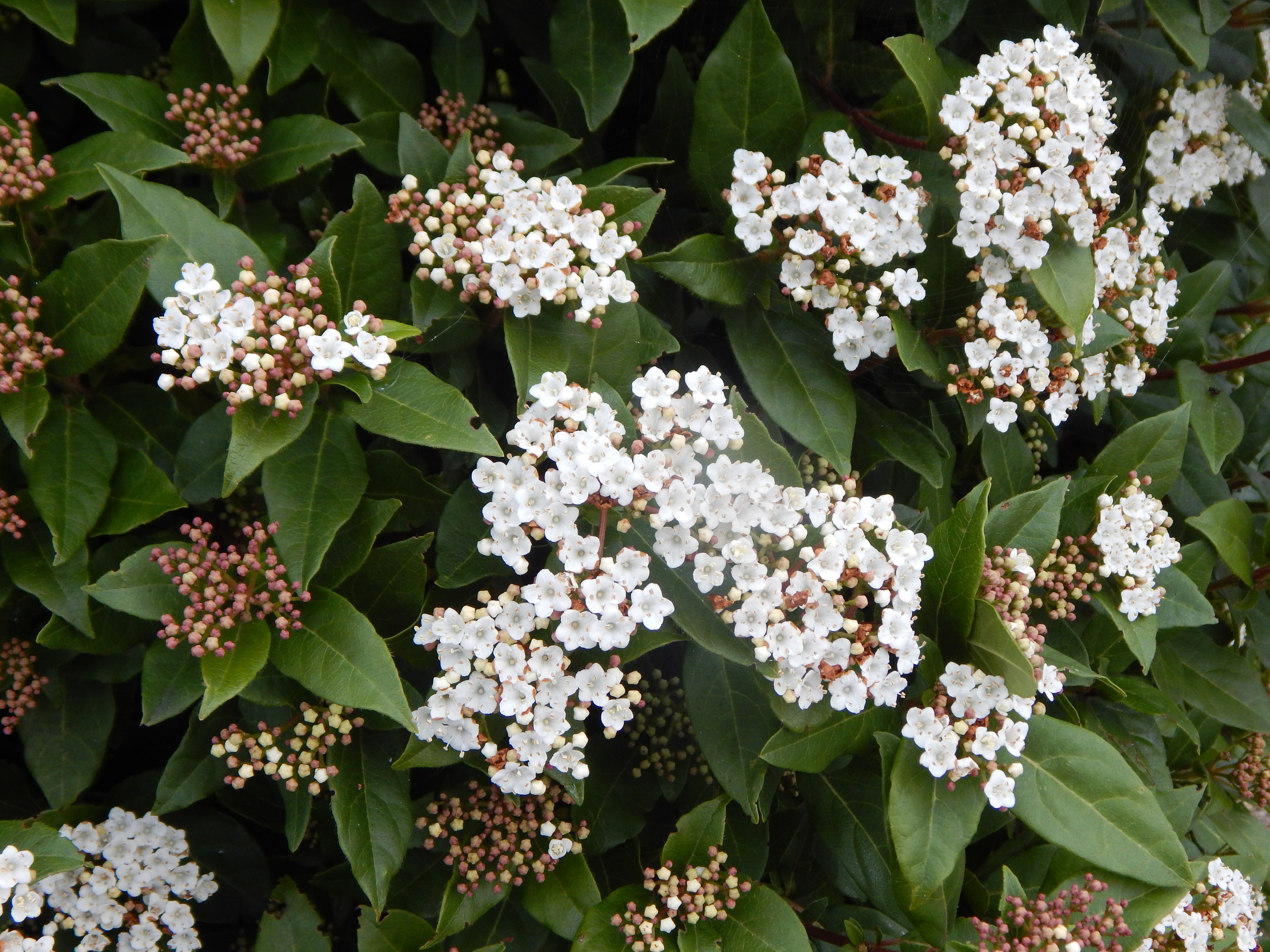
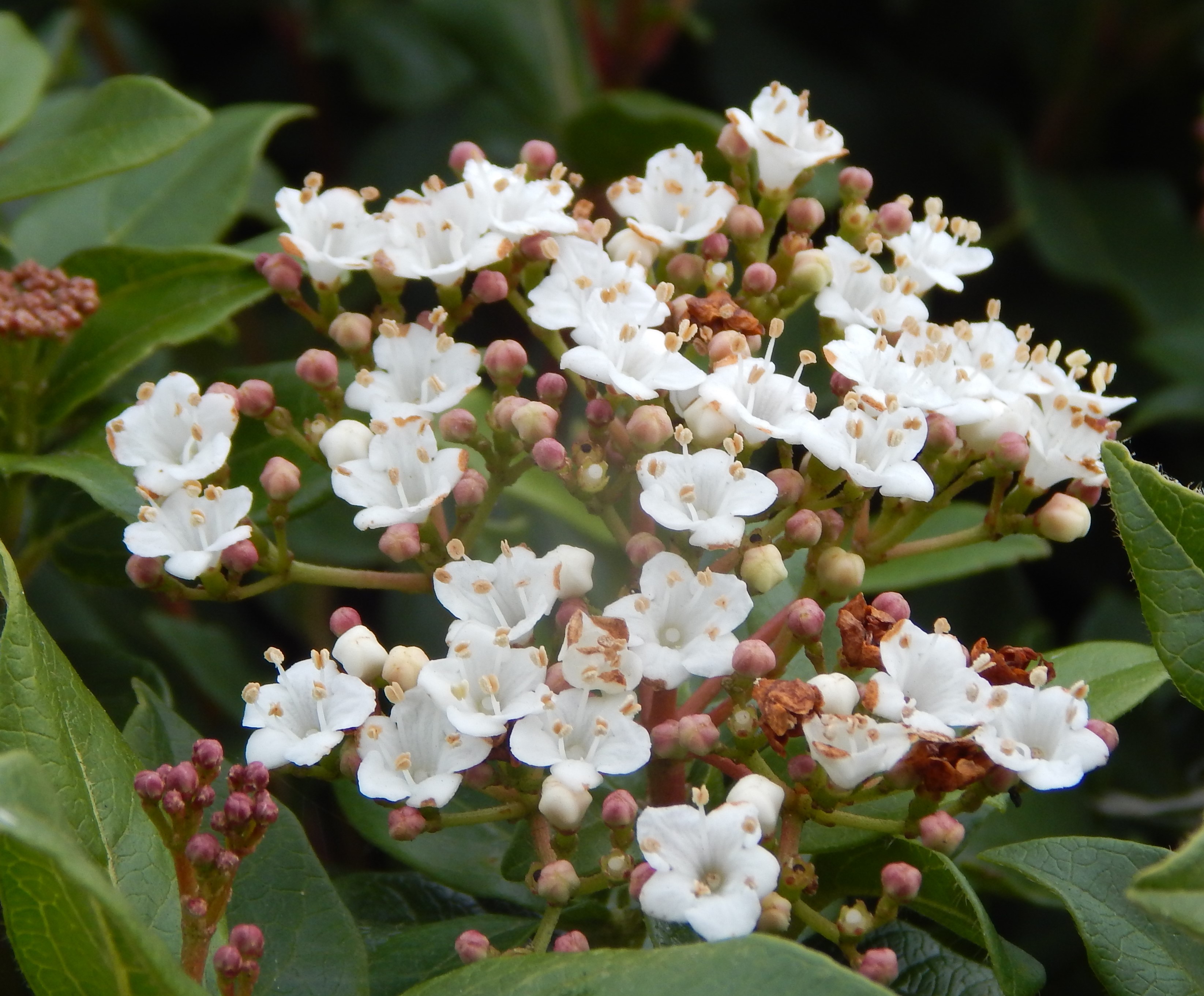

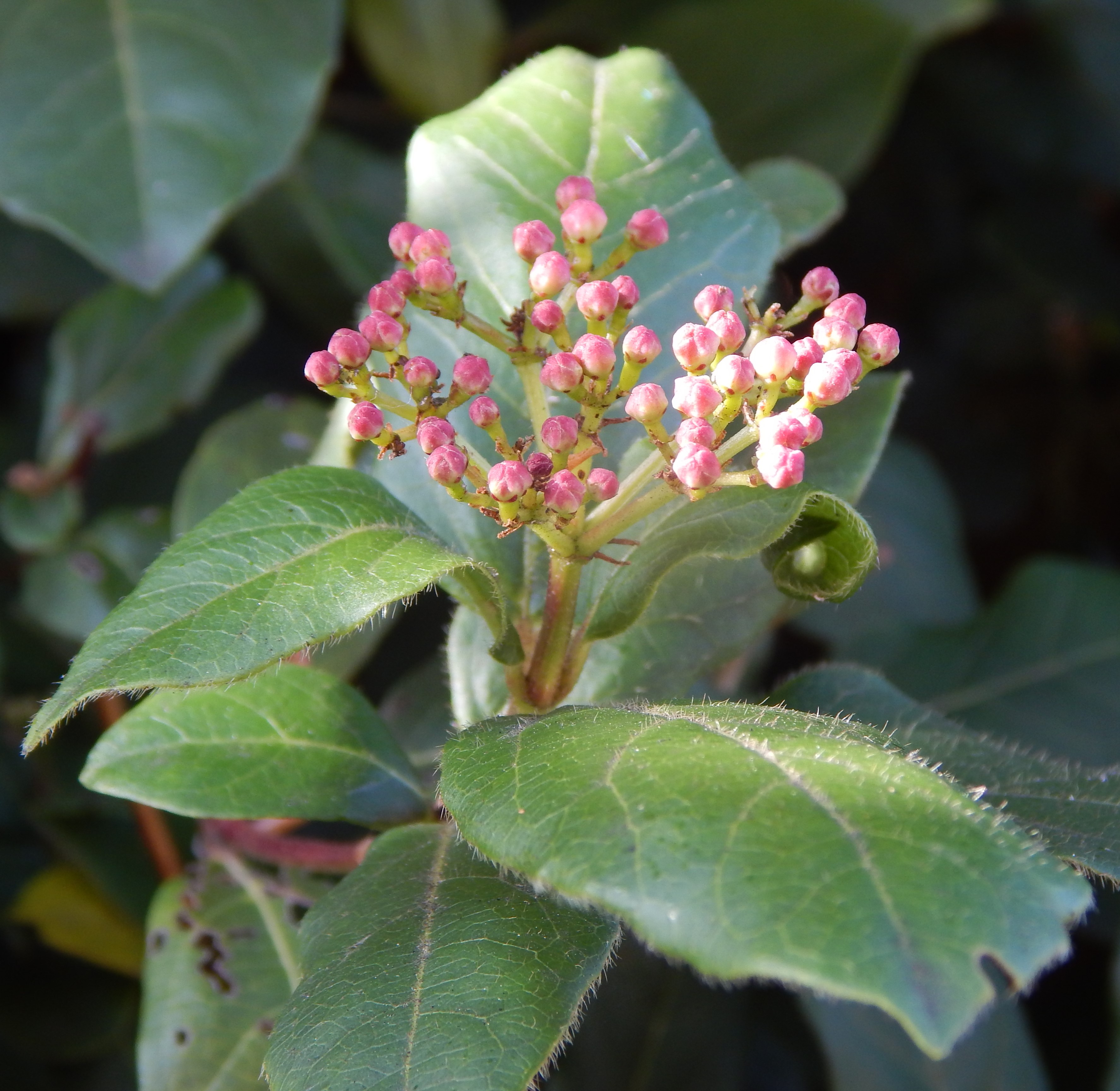

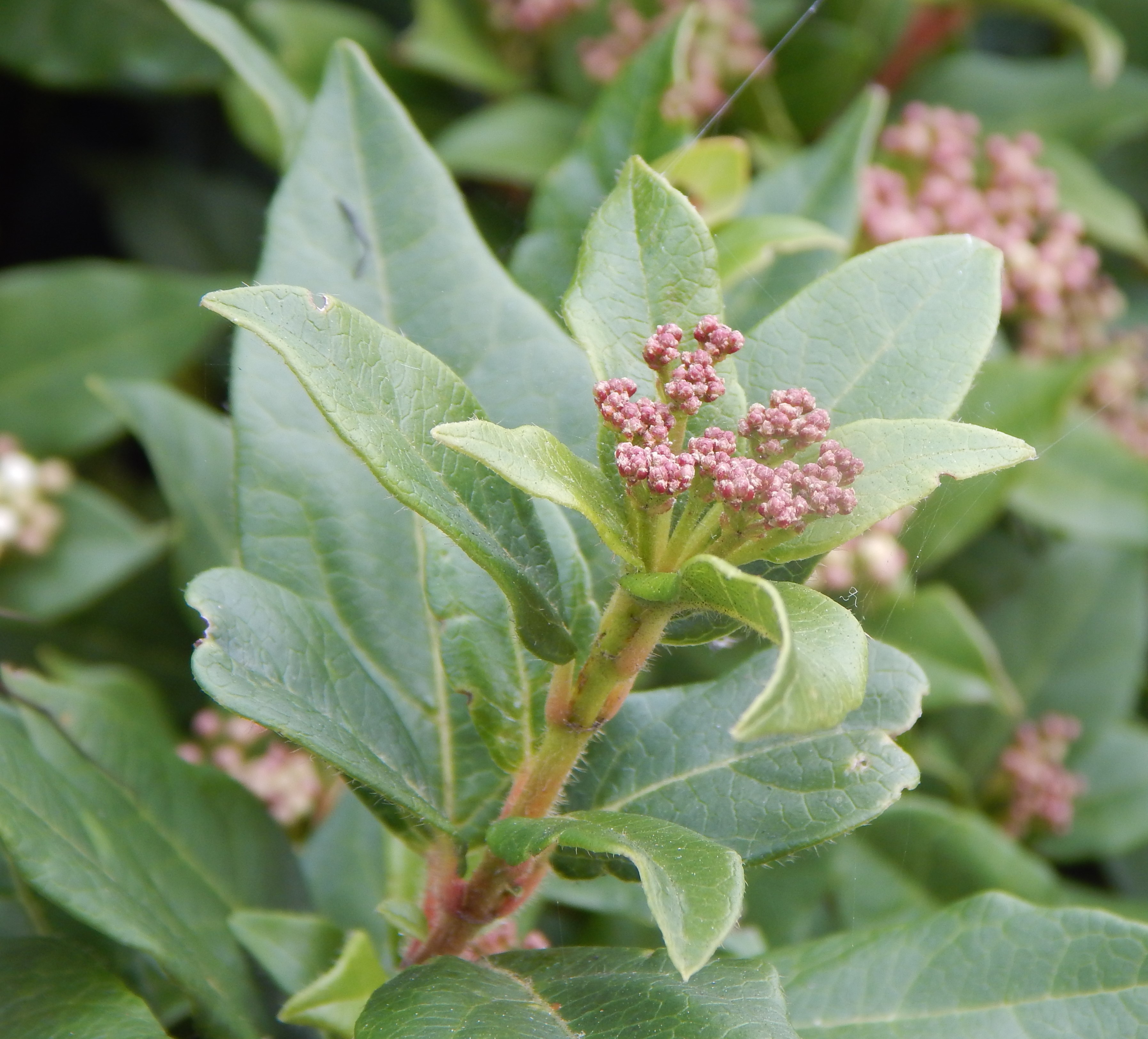

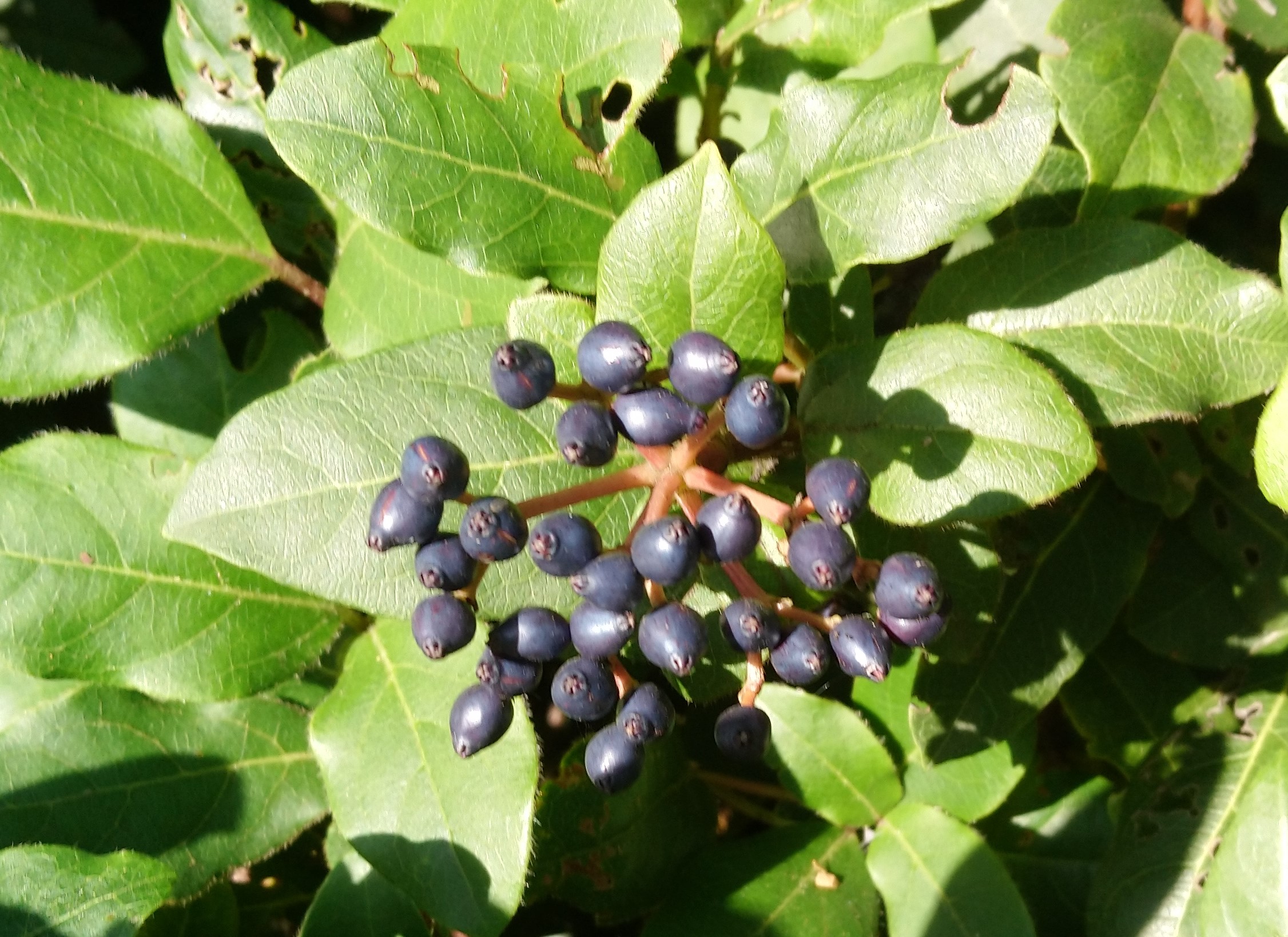
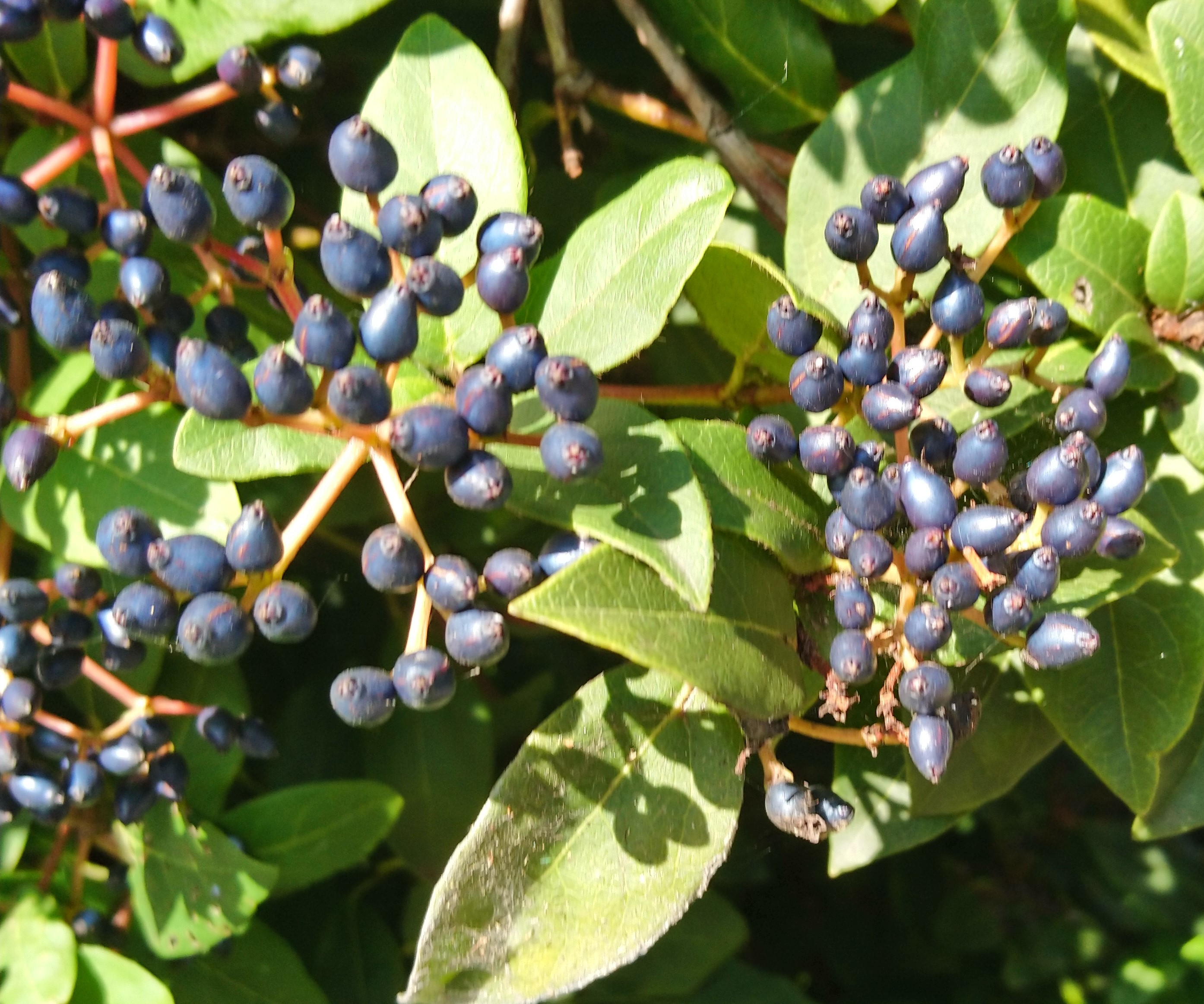
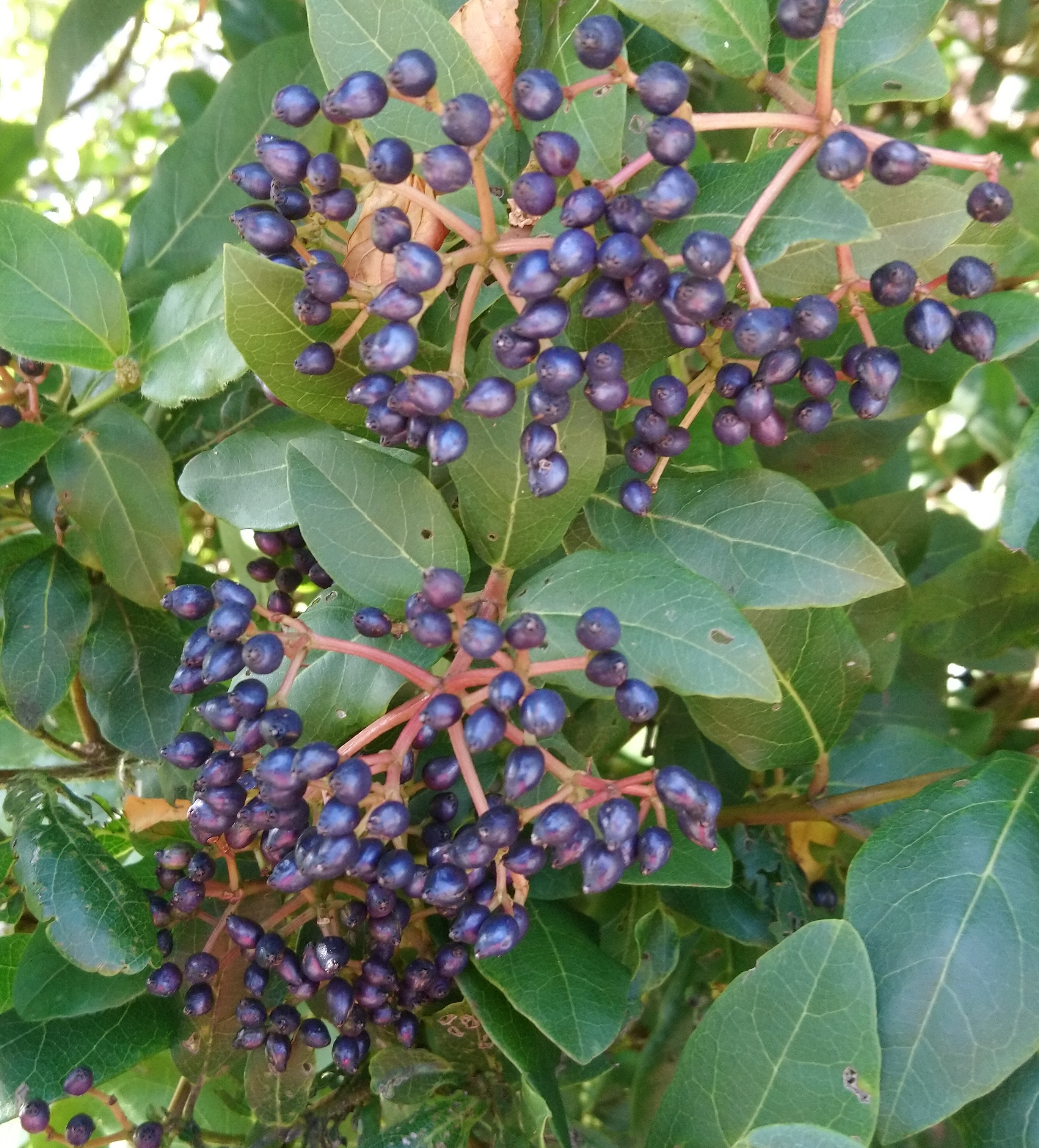
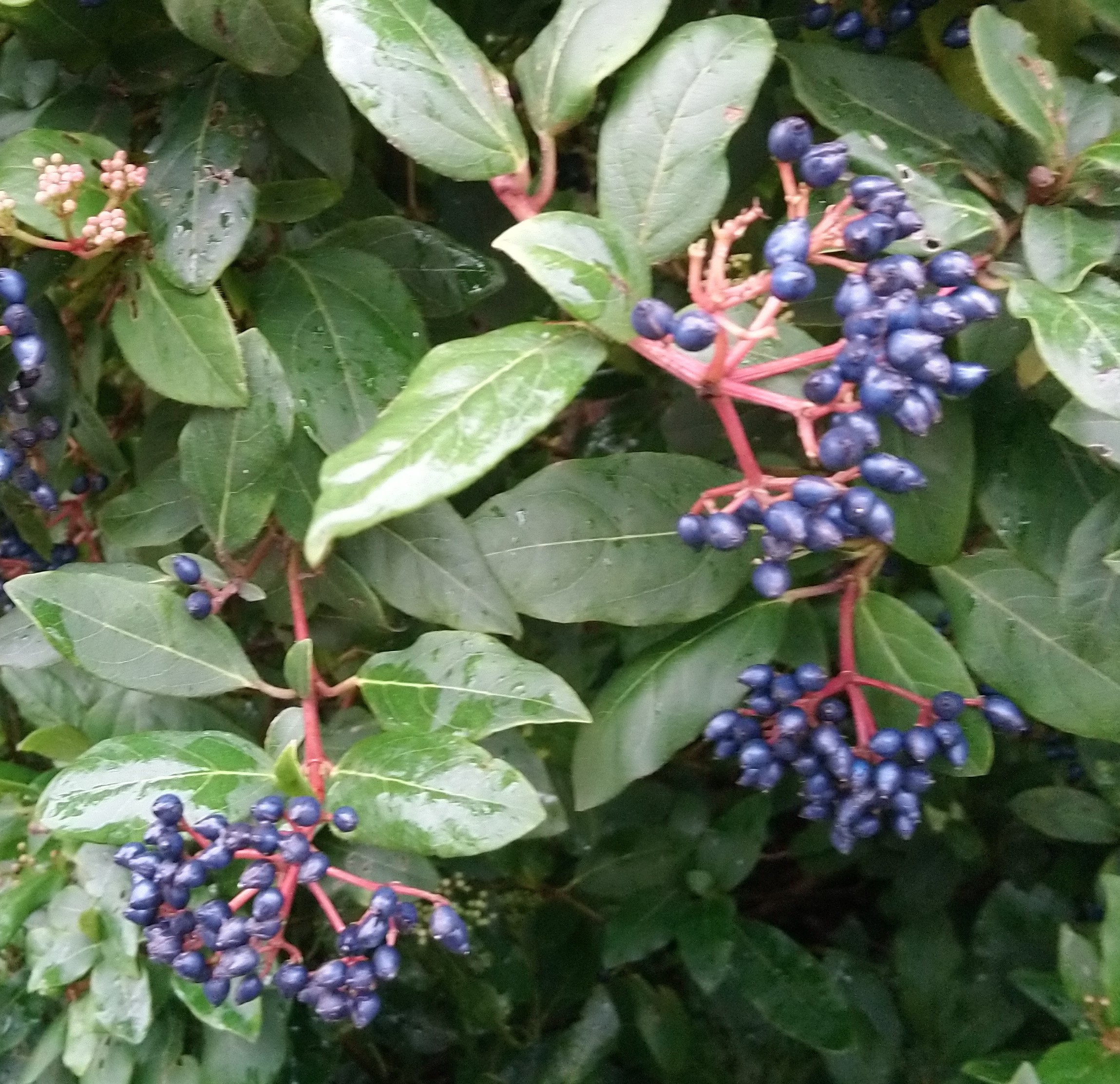
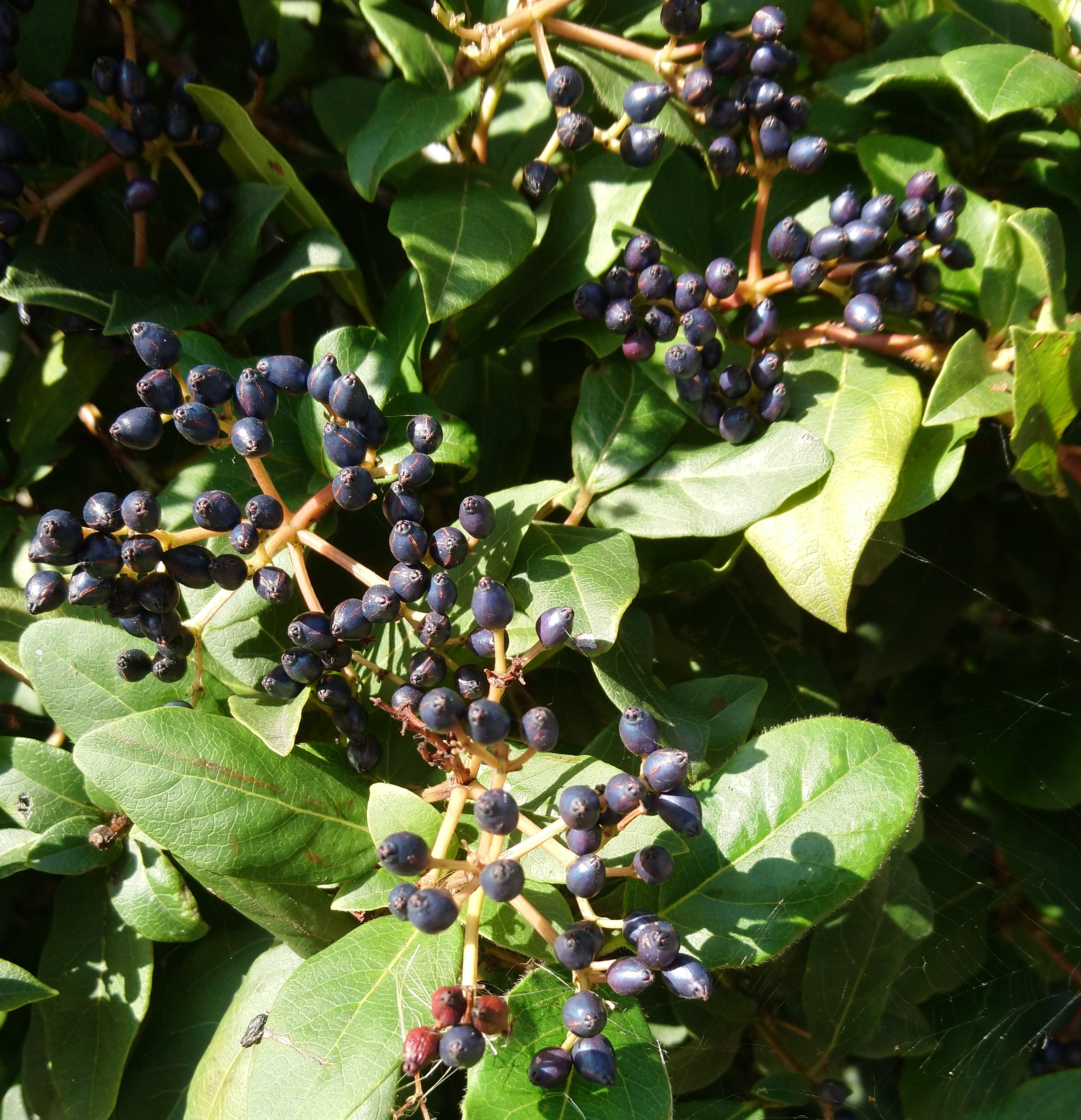
Most of the species epithets, hybrid names and cultivar names that I have not been able to identify look as if they refer to places or people.
Although the flowers are more or less similar (apart from the colour and the size of the inflorescences,) and the fruits are fairly similar (apart from colour,) the difference between the leaves of the Guelder Rose and the others above is quite striking. Perhaps I should have remembered that Goat Willow doesn’t look like most [307] Willows; [320] Whitebeam is not like [321] Mountain Ash; the [318] Tomato and Potato are not exactly like [317] Bittersweet Nightshade; and Almonds, Apricots, Peaches, and the poisonous sloes of [282] Blackthorn are just varieties of [280] Cherries and plums.
Habitat and use
Various species of Viburnum come from parts of North America and temperate Eurasia, with some extending to South America, northwest Africa and southeast Asia.
They are grown extensively in the UK as garden plants for their flowers, fragrance, berries, and attractive leaves. Some flower late in the year and some flower twice in Summer and late Autumn.
Other Notes
This is the last of our garden flower species and I have used it to make some more general comments about garden plants. When many species have been used to produce many hybrids and then hundreds of cultivars, it becomes impossible to give a precise identification to species level. That’s why some of the cultivars in the list above are just shown as names following Viburnum.
It’s the reason why I normally just leave my pictures with a probable or possible species identification. I will give the same disclaimer to my pictures above – I may have got them right but they could be wrong. [There are other reasons why I sometimes have the same problem with some insects.]
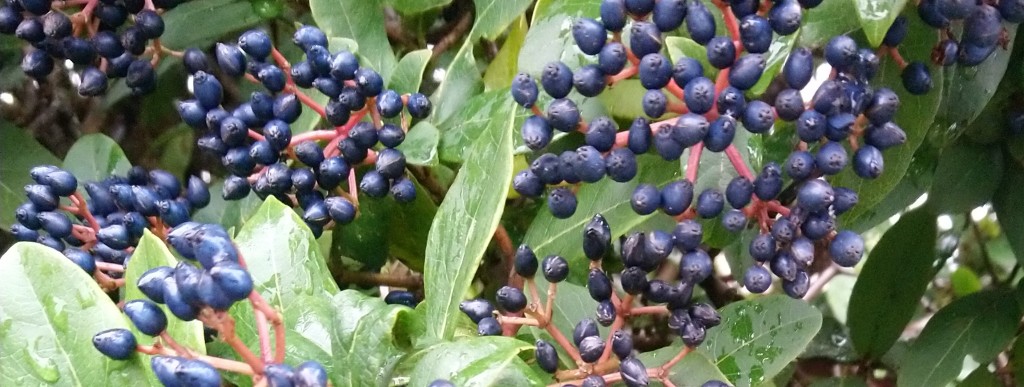
See also
There are no more garden plants in my blog but keep looking.
